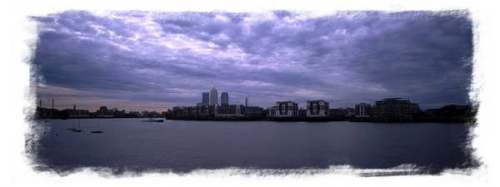
Hillwalking
Trials held in 1685 to punish those who took part in the Duke of Monmouth's rebellion in south west England.
Monmouth had rebelled against the catholic monarchy and had been defeated at the battle of Sedgemoor (Somerset).
Judge Jeffreys, the Lord Chief Justice tried the defeated rebels and hanged 300. A further 800 were transported as slaves to the then colonies.
When the protestant William of Orange deposed James II Jeffrey's cruelty was not forgotten and he ended his days in the Tower, after being.caught and beaten by the London mob after hiding in "The Town of Ramsgate" near the "Prospect of Whitby"
Return
Norman castle, dating from 1078, next to the Thames. Built by William the Conquerer and extended by Henry II and Edward I, so that the original White Tower, a classic norman keep, is now surrounded by two sets of towered curtain walls.
The Tower houses the crown jewels and an historical armoury which originally would have contained current weapons which might be showed to visitors to impress on them the Kings might.
The tower also acted as a prison and place of execution, two of Henry VIII's wives having been beheaded there.
The tower is staffed by the Yeoman Warders, known as "Beefeaters".
Return
Doggett's
Coat and Badge
Thomas
Doggett's Coat and Badge has been awarded since 1715 for the Thames watermans'
race between London Bridge and Chelsea. The race takes place in July and
is over 4 miles 5 furlongs.
The
pub of the same name is at the south end of Blackfriars Bridge. At the
other end of the bridge is the "Blackfriar"
with its superb bas-relief art nouveau marble and copper interior. This
pub was almost lost to us, having been saved from demolition by a campaign
by the late poet laureate, John Betjamin. Return
Recreated by the late Sam Wanamaker, "The Globe" stands near to its original site which is now occupied by Anchor Terrace. Built in 1598, "The Globe" was burnt down and rebulit in 1613.In 1642 it was closed down by the Puritans and demolished in 1644. The site was rediscovered in 1989 along with its sister playhouse "The Rose". Return
The "Prospect of Whitby" (once nicknamed "Beanies") formerly "The Devils Tavern" was frequented in his day by the infamous Judge Jeffries.
Dating from 1520, but rebuilt in the 18th century after a fire, the "Prospect of Whitby" is named after the Whitby collier which used to berth there.
The ground floor bar uses old ships timbers and sections of masts in its construction. Upstairs there is a restaurant and its beer garden has views of the river.
Return
HMS Belfast is an Edinburgh class cruiser, built in 1938.
It saw active service in WW2 and the Korean war. At the battle of North Cape it took part in the action that sank the German battlecruiser Sharnhorst.
Displacement 11,553 tons, 613' 6" long, 12 x 6" main armament. (The main armament is trained on Gateway (Scratchwood) Services on the M1 motorway in Barnet, about 12 miles away). It is possible to tour the nine decks of this impressive warship. Now run by the Imperial War Museum.
Return
The
Monument
The monument commemorates
The Great Fire of London, its height is the distance from the Monument
to Pudding Lane, where the fire started. 203 feet high and 313 steps to
climb. Monument Street off Lower Thames Street.
Return

return to London Walks homepage